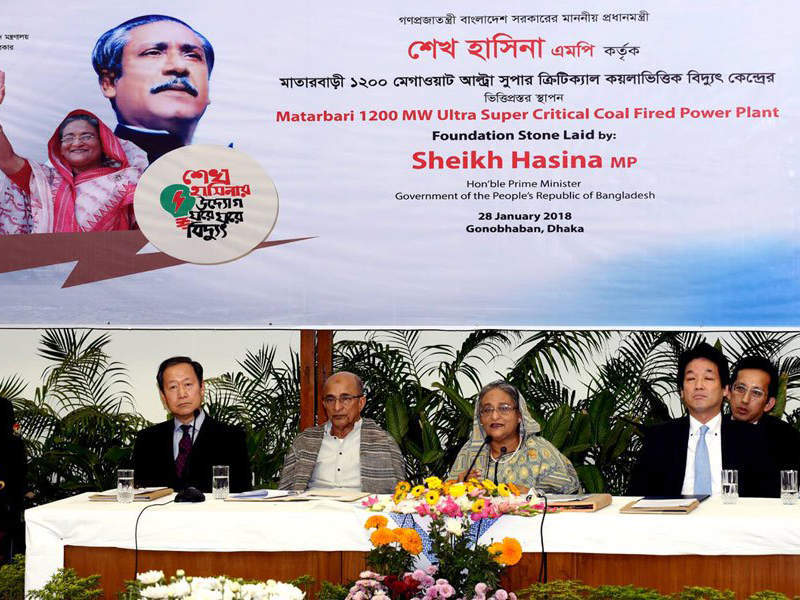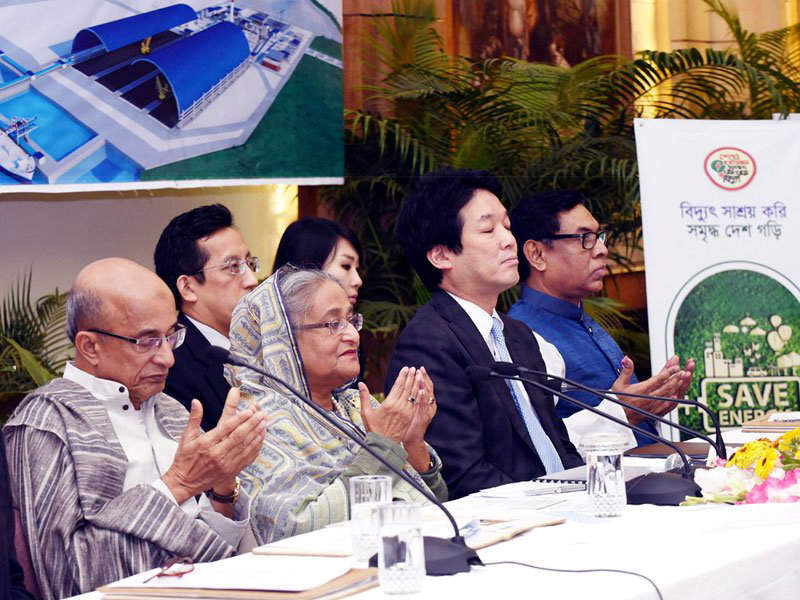Matarbari coal-fired power plant is being developed in Maheshkhali in the Cox’s Bazar district of Bangladesh.
Coal Power Generation Company Bangladesh (CPGCBL), a state-owned enterprise of the People’s Republic of Bangladesh, is developing the 1.2GW project with an estimated investment of $4.5bn.
The Matarbari power plant was proposed in September 2011 and granted environmental approval in October 2013. Ground-breaking ceremony for the project took place in January 2018, while operations are expected to begin by 2024.
The plant is expected to account for 10% of the total generation capacity of Bangladesh.
Project Gallery
-

The 1.2GW Matarbari thermal power plant is being developed in Cox’s Bazar district in Bangladesh. Image courtesy of Bangladeshi Awami League.
-

The power project includes two 600MW ultra-supercritical coal-fired power units along with a deep sea port at the coast of Bay of Bengal. Image courtesy of Bangladeshi Awami League.
-

The Matarbari thermal power plant is expected to be commissioned by 2024. Image courtesy of Bangladeshi Awami League.
Matarbari coal-fired power plant make-up
Matarbari thermal power plant will be developed on a 1,500-acre site. It will consist of two thermal units based on ultra-supercritical coal-fired technology, with an installed capacity of 600MW each.
Each of the two units will consist of a steam-based pulverised coal-fired boiler unit, a 600MW steam turbine and a 750MVA steam generator. The plant will feature a 275m-high flue gas stack and an electrostatic precipitator, which will limit the particulate emissions to 100mg/Nm³.
The power plant will require 180,000m³/h of water, which will be provided by a reverse osmosis (RO) desalination plant. The RO plant will draw water from the Bay of Bengal, which is located on the western side of the project site.
"Matarbari thermal power plant will be developed on a 1,500-acre site."
Infrastructure for the power plant
A new deep-sea port facility named Matarbari Port will be developed for importing the coal required for the power plant. The port will include a 760m-long container and a multi-purpose terminal.
The port terminal will include a fuel berth, a fuel transportation facility, and two coal-handling jetties. The channel length will be 14km, width will be 250m and maximum depth will be approximately 18.5m.
A new 400kV transmission line will be developed to transmit the electricity generated by the power plant to the national grid.
Coal supply for Matarbari power plant
The power plant is expected to require 3.73 million tonnes (Mt) of coal a year, which will be imported from Indonesia, Australia and South Africa through the Matarbari Port.
A coal unloading system equipped with rail-mounted continuous bucket type unloaders will transport the imported coal to the power plant.
Financing
Japan International Cooperation Agency (JICA) provided an Official Development Assistance (ODA) loan of ¥10.74bn ($90m) for the project, in June 2014. The ODA loan has a repayment period of 30 years and grace period of ten years.
JICA awarded another ODA loan worth ¥2.65bn ($20m) to the Government of Bangladesh in June 2018 for the development of the Matarbari port.
Contractors involved
JICA Study Team and Tokyo Electric Power Services prepared the environmental impact study for the power plant.
A consortium of Sumitomo, Toshiba and IHI was awarded the engineering, procurement and construction contract for the project, in August 2017.
Sumitomo subcontracted Toshiba Plant Systems and Services for constructing the port and providing other plant equipment and associated civil work, while Penta-Ocean Construction was awarded a $1.4bn-worth subcontract for the construction works related to Matarbari port.
Toshiba will supply the steam turbines and generators for the power plant, while IHI will provide the boilers.
Sumitomo awarded the civil engineering contract worth $840m to Posco E&C, a company based in Korea.
Roads and Highways Department (RHD), Bangladesh contracted DevCon for the detailed design and supervision of access road construction for the Matarbari coal-fired power plant.
